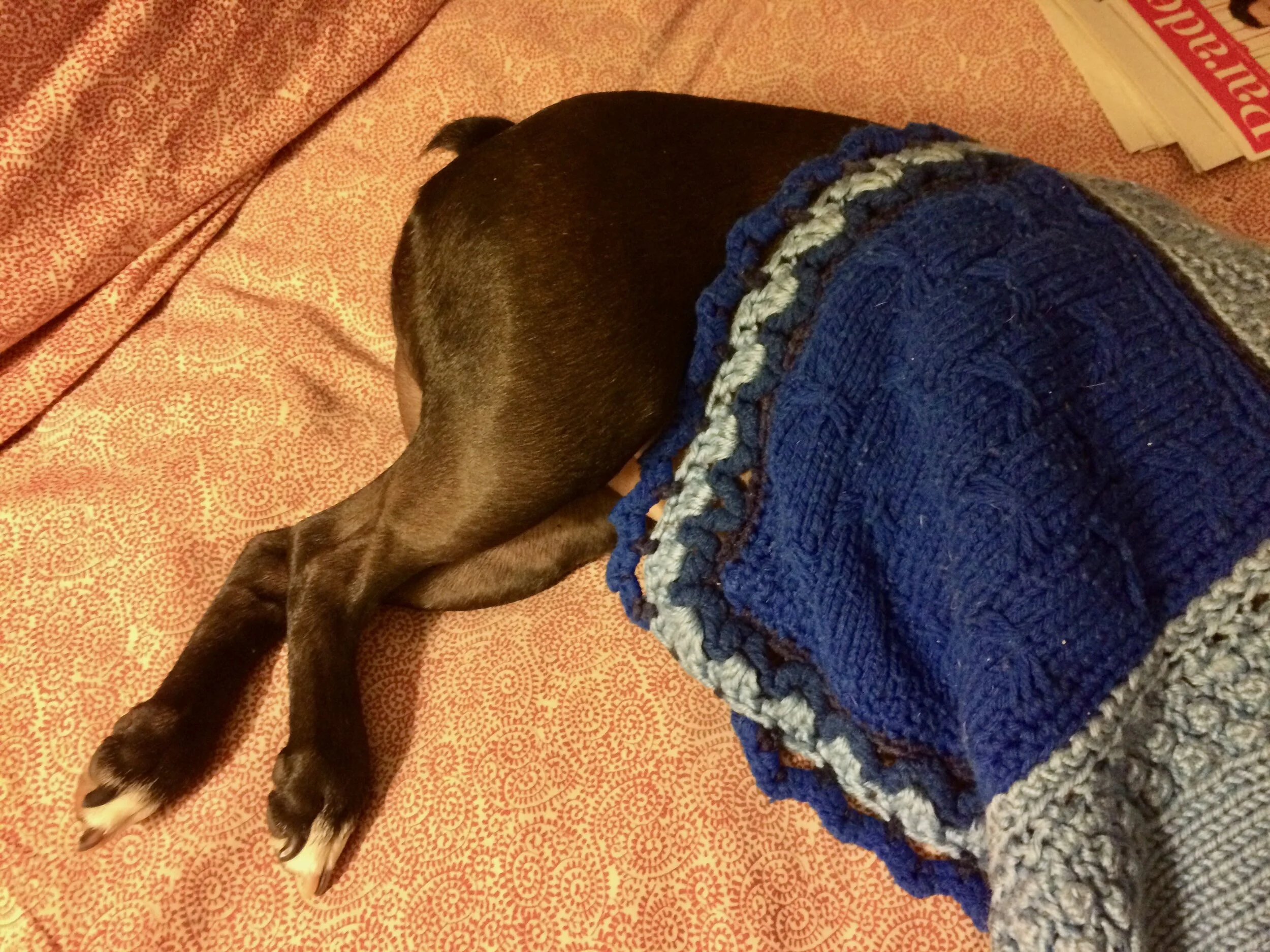Since launching our plans to move out of state, my wife’s and my cell phones have been blowing up.
We recently got so caught up in a flurry of texts with our LA and Portland realtors that we did not notice one of our dog’s “triggers” sweeping around the corner toward us. Lilly, our Boston terrier, leapt above the sidewalk and crashed to the pavement smack onto her left knee and hip. She came up limping. We were both horrified by our lapse of attention.
A wet-read of X-rays at the vet’s was inconclusive: Lilly had either dislocated her patella (knee cap) or torn her anterior cruciate ligament (ACL). A follow-up read by a radiologist two days later offered the same vague result.
A dislocated Patella “may slip back in to place,” we were told; the torn ACL would likely require surgery. Over the first week, we either carried Lilly down the stairs or took the elevator to street level. Daily walks were scaled back to short potty and sniffing strolls. Viewed from behind, Lilly’s left hind leg extended farther back than the right and only the very tip of her left hind paw hit the ground as she walked. Upon trying to sprint, Lilly hiked her bent left leg up under her torso and galloped along on three legs.
We’ve been masking her daily dose of Heloxidyl, an anti-inflammatory, in her chicken treats. Gradually, Lilly has improved. Now when she squats to pee, her left hind leg is more flush with the right and her left hind paw bears more weight when she walks. We took a leisurely half-mile walk yesterday and played a relatively sedate game of fetch earlier today, noting less leg-hiking or hobbling. We don’t overdo anything.
We learned that her patella may have luxated (dislocated) because the patellar ligament is attached off-center on the shin bone toward the inside of the leg. This occurs most frequently in small breed dogs like our beloved Boston. When her thigh muscles contract while walking or running, the force applied to the patella may have pulled it to the inside of the knee. Several years of friction may have eroded the femur’s inner groove causing the patella to slide toward the inside of the knee until it gave way.
Luxations are graded from I (mild) to IV (severe). Sometimes, both knees are affected to varying degrees. About half of affected dogs get bilateral luxations. Some dogs may be able to kick the affected leg to one side, hyperextending the knee and snapping the patella back into place. I’ve seen Lilly attempt this once since the accident. Apparently her effort didn’t take.
Chronic patellar luxation may predispose our Lilly to a torn anterior or posterior cruciate ligament. These are “X”-shaped ligaments that create the “hinge” between the femur (thigh bone) and tibia (shin bone). Given Lilly’s history of occasional limping, her sharp changes of direction when she plays and her now-less-frequent twisting and turning in response to other dogs, a torn ligament is a possibility.
A torn ACL or PCL is far more painful than knee dislocation. If Lilly is in pain or otherwise uncomfortable, she’s not letting on.
The timing of all this could not be worse. Moving day is this Friday. Our LA vet is networking to find us a connection in Portland. Finding a good vet is our first priority upon landing in our new home. In the meantime, nix on heavy exercise or activity involving hairpin turns.
Our taking Lilly’s behavioral progress for granted led directly to her injury - a fact that pains us to no end.
Such was our hard lesson in the ongoing need to train the trainer.

